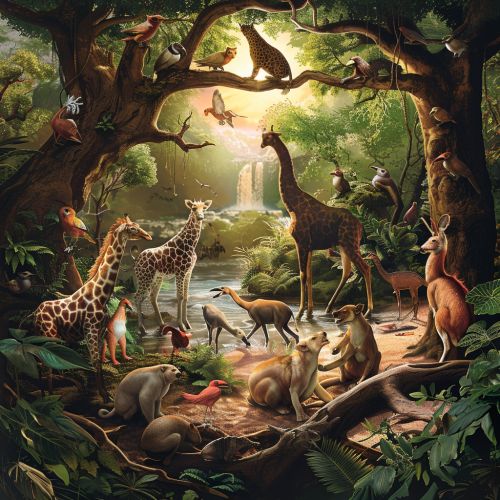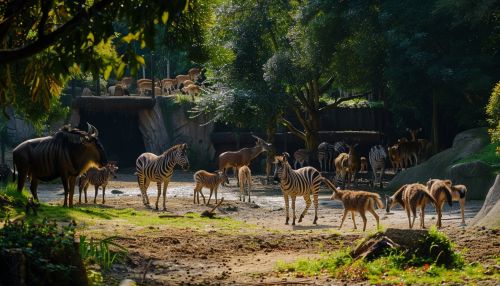Animal Social Structure
Introduction
Animal social structure refers to the organization of interactions and relationships among individual animals within a species. It encompasses a wide range of behaviors, from simple pair bonding to complex hierarchical systems, and plays a crucial role in survival and reproduction. Understanding the social structure of animals can provide insights into their ecology, evolution, and behavior, and has implications for conservation and management strategies.
Evolution of Social Structure
The evolution of social structure in animals is a complex process influenced by various ecological and evolutionary factors. The primary driver is the need to maximize reproductive success, which can be achieved through cooperation, competition, or a combination of both. The specific social structure adopted by a species depends on its ecological context, life history traits, and evolutionary history.
Evolutionary biologists have proposed several theories to explain the evolution of social structure. The kin selection theory, for instance, suggests that animals are more likely to help relatives because they share a significant proportion of their genes. This can lead to the evolution of cooperative behaviors and complex social structures. The game theory approach, on the other hand, models social interactions as strategic games, where the best strategy depends on what others are doing.
Types of Social Structure
Animal social structures can be broadly classified into solitary, pair-living, and group-living structures. Each of these categories can be further divided based on the nature and extent of social interactions.
Solitary Animals
Solitary animals live and forage alone, interacting with others of their species only for mating. This social structure is common in species with large home ranges, such as tigers and snow leopards. Solitary animals often have well-developed territorial behaviors to defend their resources.
Pair-living Animals
Pair-living animals form stable pairs for breeding and often for life. This social structure is common in bird species, such as swans and albatrosses, where both parents are needed to raise the offspring. Pair-living can also be found in some mammal species, such as gibbons.
Group-living Animals
Group-living animals live in social groups that can range from small family units to large colonies or herds. This social structure is common in primates, such as chimpanzees and baboons, and in social insects, such as ants and bees. Group living can provide benefits such as increased foraging efficiency, defense against predators, and access to mates, but it also comes with costs, such as competition for resources and risk of disease transmission.
Factors Influencing Social Structure
The social structure of a species is influenced by various ecological and evolutionary factors, including resource availability, predation pressure, and reproductive strategies. These factors interact in complex ways to shape the social structure of a species.
Resource Availability
The availability and distribution of resources, such as food and nesting sites, can influence the social structure of a species. For example, in species where resources are clumped and defendable, such as lions or meerkats, group living can be advantageous as it allows individuals to defend resources against rivals.
Predation Pressure
Predation pressure can also influence the social structure of a species. In species where predation risk is high, group living can provide safety in numbers, as seen in many bird and fish species. However, in species where predators target groups, solitary or pair-living may be more advantageous.
Reproductive Strategies
Reproductive strategies can also shape the social structure of a species. In species where males can monopolize multiple females, such as gorillas or elephant seals, a polygynous social structure can evolve. In contrast, in species where both males and females invest heavily in offspring care, such as penguins or wolves, a monogamous social structure can evolve.
Implications for Conservation
Understanding the social structure of animals has important implications for conservation. Social structure can influence the population dynamics and genetic structure of a species, which in turn can affect its vulnerability to threats such as habitat loss, climate change, and disease outbreaks. For example, species with complex social structures, such as elephants or wolves, may be more vulnerable to human disturbances because these can disrupt their social organization and reduce their reproductive success.
Conservation strategies should therefore take into account the social structure of the target species. For instance, in species with complex social structures, conservation efforts may need to focus on preserving social groups rather than just individuals. Similarly, in species where social structure is influenced by resource availability, conservation strategies may need to ensure the availability of key resources.
See Also


